
Court bases – which one is right for you?
Blog // Court bases – which one is right for you?

Court bases – which one is right for you?
More than any other component of a sports court, the court base (and sub-base) is the most important.
Over the years there has been many types of sports court bases which have come and gone. In the past, sports courts would often be constructed based on what materials were available, the popularity of the court type at the time and environmental conditions of the location they were constructed. Today some of these “historical’ base types can still be found which include Ant Bed, carpet, wood and tiled systems.
Commonly today there are three main types of court base types:
- Asphalt
- Concrete
- Road Base
The type of base available will often be guided by the desired surface type and the results of soil conditions and engineering. Each type of court base has its own functions and we will over those now so you can make a more informed decision about which one is right for your court!
Asphalt

Often, an asphalt court is cheaper to construct than concrete, which has made it a popular choice for schools and public spaces. The material itself is made from a mixture of sand, gravel and bitumen (a sticky substance refined from crude oil) which naturally expands and contracts in heat.
Traditionally, asphalt courts do not have anything applied to it and simply has lines painted to the finished surface to allow for play. Over time, the direct exposure of the base to the environment and the fact that the surface naturally expands and contracts will cause cracking which requires repairing. When Asphalt courts crack, the crack lines can become a point of weakness and if not repaired, will continue to weaken each year, and can cause ongoing issues such as poor water drainage.
Today, it is always recommended that an additional surface is added atop of an Asphalt base in either an acrylic paint or synthetic grass which adds another wear layer and in turn an additional layer of protection to the base.
Concrete
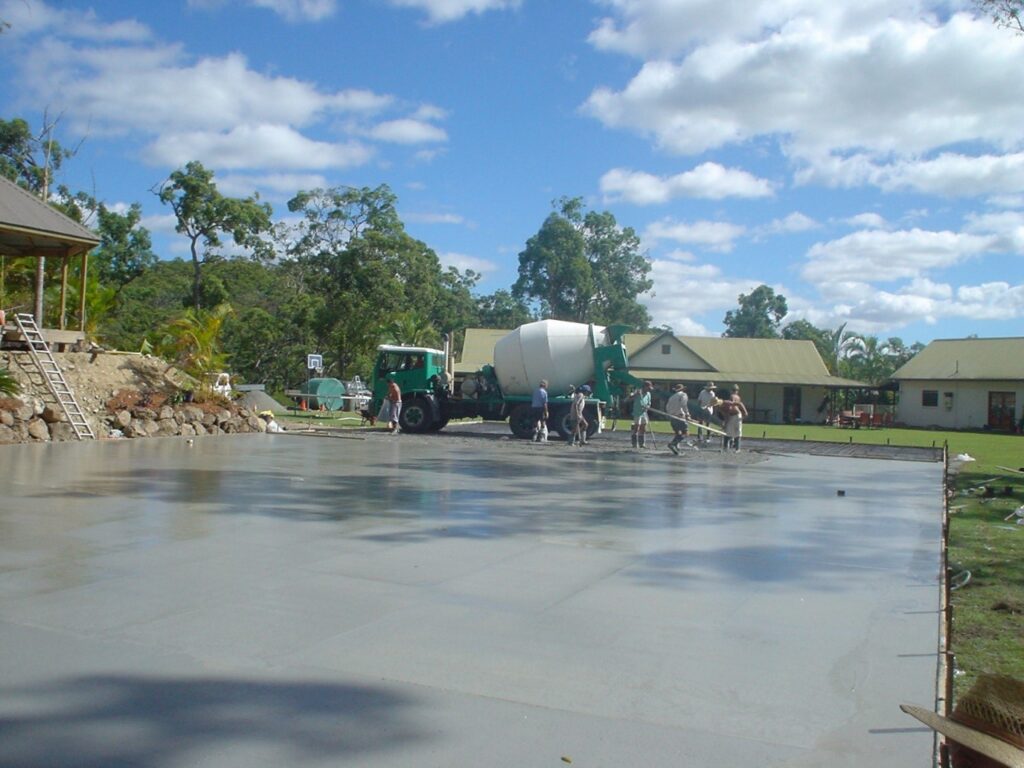
Concrete courts are incredibly versatile and because of their durability and low maintenance requirements are the most popular in residential, commercial, and public settings. A concrete base, commonly referred to as a “Hard Court”, allows flexibility to choose what type of popular surface type you would like and is constructed to fit the space available to you.
After receiving the results from your soil test, a new concrete slab will commonly be classed as a type S or M which will be engineered to have a 100mm thickness with construction joints that will minimise and prevent future cracking. A well-constructed and maintained concrete sport court will offer decades of recreational enjoyment.
Aesthetically, there is little difference between concrete or asphalt initially as they can each be covered with acrylic, cushioned or synthetic surfaces. Asphalt bases are cheaper than concrete to construct but due to the nature of asphalt bases and the associated repair and maintenance costs, concrete will always be the most cost effective in the long term.
Since concrete courts have a good resale value and offer less ongoing maintenance than asphalt bases, they make financial sense as well offering surface uniformity and longevity.
Road Base

A crucial factor in every tennis court construction is the earthworks, when you are opting for a road base court this is more important ever. Properly prepared road base courts will give a good level surface to lay the synthetic grass court surface over, however a poorly prepared base will cause the surface to become uneven over time making playing and servicing the court more difficult. The court can also become more susceptible to compaction in the hollows because of this
Tennis courts must have approximately 1% fall, so knowing the soil conditions is a must to obtain correct drainage. Therefore, the utilisation of excavators, drotts and dual grade lasers are required to obtain correct levels and falls.
Once the subbase is prepared, the next step is to lay out the road base. This will be laser levelled and compacted to form the base of the court. A concrete edge beam will then be poured to the perimeter of the court which allows for the compaction of the road base. The road base is then installed and compacted with a roller to form an even and solid foundation. Unlike asphalt or concrete bases, road-based courts cannot accommodate acrylic or cushioned surfaces and will only support a synthetic grass surface.
Due to the construction material and the shorter time to complete the base installation, a road base is significantly cheaper than asphalt and concrete and is often a viable option for those who are budget conscious.
Featured Posts

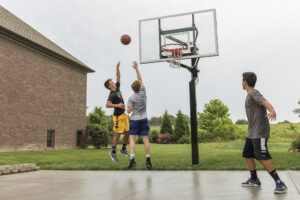
Wall Mounted Basketball Hoops vs In Ground Rings – What’s better?
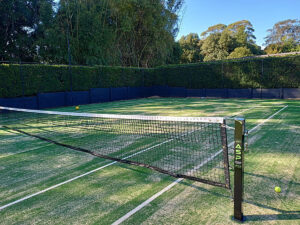
How much space do I need for my tennis court?
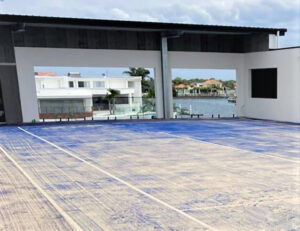
Rooftop Residential Sporting Court
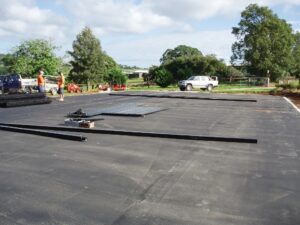
Court bases – which one is right for you?

Choosing the right style of court surface
Most Recent

The Evolution of Synthetic Grass Courts
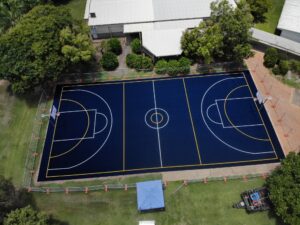
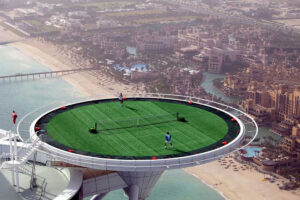
“The World’s Top 5 Craziest Tennis Court Locations”

How A Tennis Court Can Increase The Value Of Your Home

Residential Hard Court Resurfacing

Choosing the right style of court surface
Build Your Next Sports Court Project With The Local Experts
Residential or Commercial | Superior Communication | On Time & On Budget | Everything Locally Manufactured
Enquire Now
Pop your details into the form below and we’ll be in touch ASAP to arrange your free quote.
